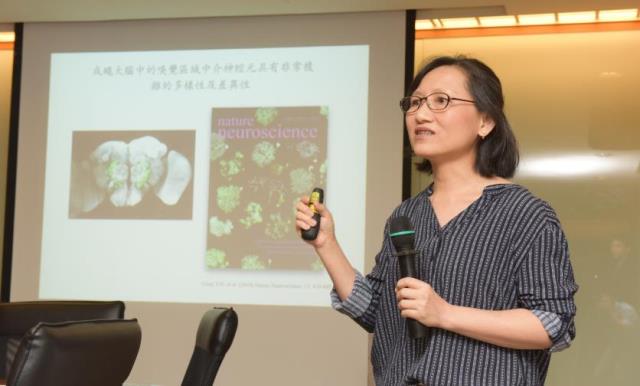Developmental or postnatal defects in interneurons have long been associated with neurological disorders. However, the diversity of these cells makes studying their development and functions in normal and pathological conditions extremely challenging.
Recently, a research team led by Dr. Ya-Hui Chou, an Assistant Research Fellow in the Institute of Cellular and Organismic Biology at Academia Sinica, has identified fly olfactory local interneurons (LNs) as a model system to investigate neural cell death control. The study systematically profiles the development of different types of fly olfactory local interneurons and identifies a group of interneurons that undergo tightly controlled cell death. The result was published in Nature Communications on June 8 2018.

Given the fact that fly olfactory interneurons show high diversity as their mammalian analog but with handful cell numbers, Dr. Ya-Hui Chou’s group wants to know how different types of interneurons acquire their identities and functions under tight developmental programs.
They first conducted a large-scale genetic screen to identify labeling drivers that allow them to visualize different types of interneurons. The team next used these identified drivers to systematically profile the development of different types of interneurons from larval to adult stages. Unexpectedly, they found a small subset of larval interneurons undergoes cell death while the rest undergo pruning and re-integrate to the adult olfactory circuit. Therefore the neighbor pruning neurons should benefit a protection mechanism that prevents them from cell death signal.
This study provides a blueprint for LN emergence and integration into the adult olfactory circuit. In addition Chou’s group builds a batch of genetic tools and establishes a novel platform for studies of LN function and dysfunction. “The most exciting finding is that a group of interneurons undergoes tightly controlled cell death without affecting normal development of their neighbor interneurons.” Dr. Ya-Hui Chou said. “They provide a great opportunity to uncover the protection mechanisms a developmental brain used to prevent unwanted neural cell death.” Molecules identified in such mechanism may serve as a drug target to trigger similar protection in patients’ brains that suffer uncontrolled neural degeneration.
Reference
Liou, N.F., Lin, S.H., Chen, Y.J., Tsai, K.T., Yang, C.J., Lin, T.Y., Wu, T.H., Lin, H.J., Chen, Y.T., Gohl, D.M., Silies, M., Chou, Y.H. (2018) Diverse population of local interneurons integrate into the Drosophila adult olfactory circuit. Nature Communications. doi:

The life of olfactory local interneurons
Five distinct types of interneurons captured at different developmental stages are pseudo-colored based on stages of observation to illustrate how interneuron diversity is achieved.
